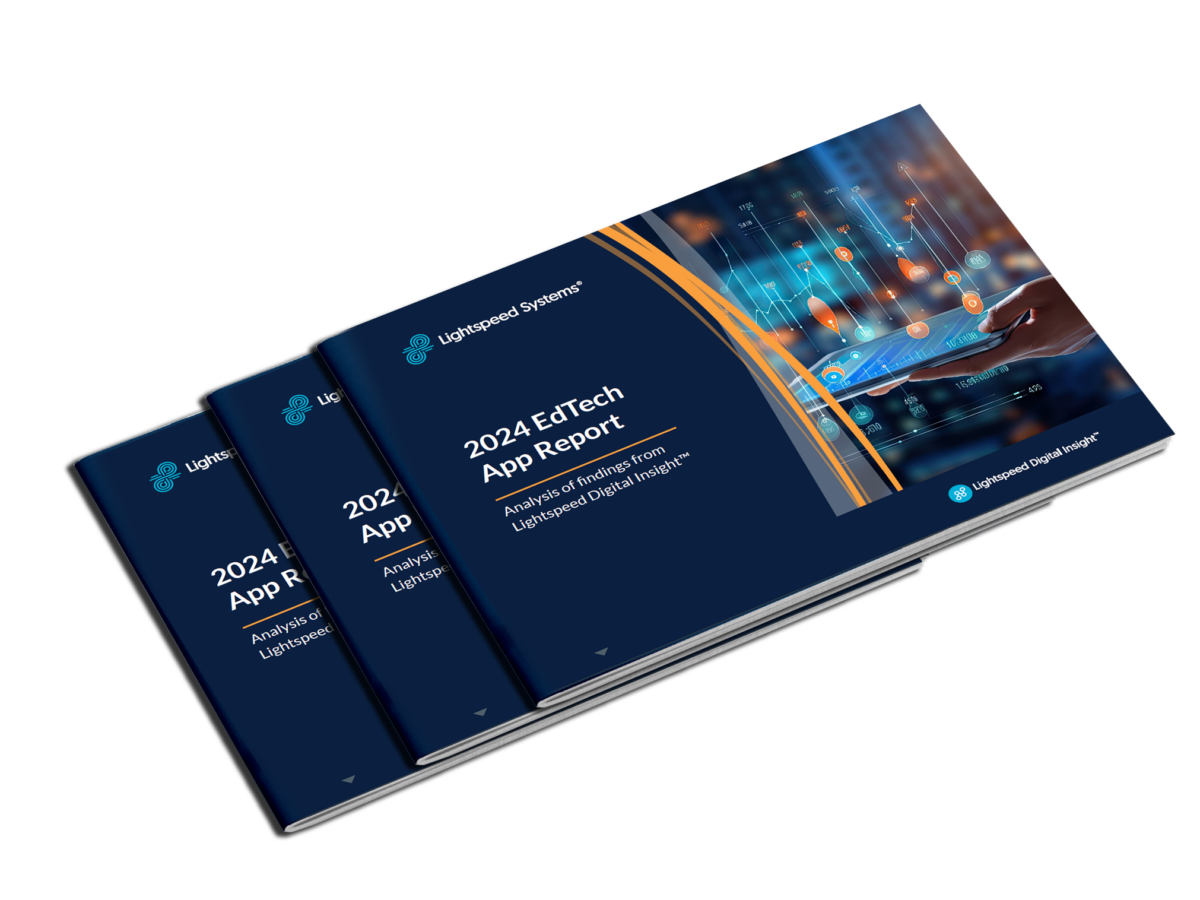Since the sudden onset of the COVID-19 pandemic in 2020, school districts have invested heavily in digital learning, both in connected hardware devices and with edtech apps. To be good stewards of public dollars and optimize those investments, teams require insights into the efficiency and effectiveness of edtech app use.
Lightspeed Systems’ 2024 EdTech App Report delivers data insights that allow both IT leaders and school administrators to benchmark their digital learning acquisition and evaluation processes. In turn, those leaders become better equipped to make informed decisions concerning district data privacy and security, budgeting, and license adoption.

EdTech App Use in K-12 Schools
Using data from Lightspeed Digital Insight™, we anonymized 2022-23 school year data from 154 school districts across the United States, with enrollments ranging from 150 students to more than 180,000. Throughout that process, student data privacy was vigilantly protected and maintained.
Key insights from the 2024 EdTech App Report include:
- On average, districts use over 2,000 apps.
- Only 97 applications make up 95 percent of student app engagement
- The size of a school district does not strongly influence the number of applications engaged.
- Over 65 percent of applications had at least one change to their data privacy policies during the year.
- Students in grades six, seven, and eight interact with the greatest number of applications—75, 74, and 72, respectively.
- Students spend an average of 170 minutes a day engaged with learning apps.

Top Considerations in Navigating Through Declines in Funding Sources
Districts ramped up their digital learning capabilities with ESSER funding. As that funding and other state or local funding streams decline, many districts now face difficult decisions on how to prioritize remaining edtech investments.
Over the past couple years, many Instructional Technology and IT teams have created application approval processes, but many are still refining or building this oversight. Based on research and discussions with many experts, app approval considerations should include the following:
- Security, data privacy, and interoperability—Does an application meet the district’s data privacy and governance standards, and does it work within the district’s existing tech stack?
- Alignment with curriculum—Is the application in question a quality learning app, aligned with the district’s curriculum standards for design and usability?
- Redundancies—Which applications are redundant, adding unnecessary costs, administrative overhead, and continued security risks?
- Student usage—Has an application been used by students, and is it helping to meet goals set by the district?
- Student impact—How does the application affect desired student learning outcomes?
- Ease of use and professional development opportunities for teachers—How does the application aid teachers and facilitate student learning?
In this year’s update additional resources and guidance from the International Society for Technology in Education (ISTE) has been included to support educators’ work in effectively reviewing apps from the pedagogical design filter. Pedagogical design includes considerations like a teacher’s digital experience, how the tool supports learner variability, and how the tool is inclusive of multiple relevant cultures, backgrounds, motivations, and abilities. Included is a list of free resources, rubrics, and certifications you can turn to in assessing these areas.
Opportunity to Optimize Investments while Safeguarding Learning
By using the insights in the 2024 EdTech App Report as a benchmark, and an analytics tool that provides comprehensive data on edtech app usage, IT and curriculum teams can work collaboratively to make smart decisions that support district priorities, staff and student needs.
Download your copy of the 2024 EdTech App Report today to best equip your district’s IT to optimize its edtech return on investment (ROI). For more information on how Lightspeed can support your success, please reach out.

